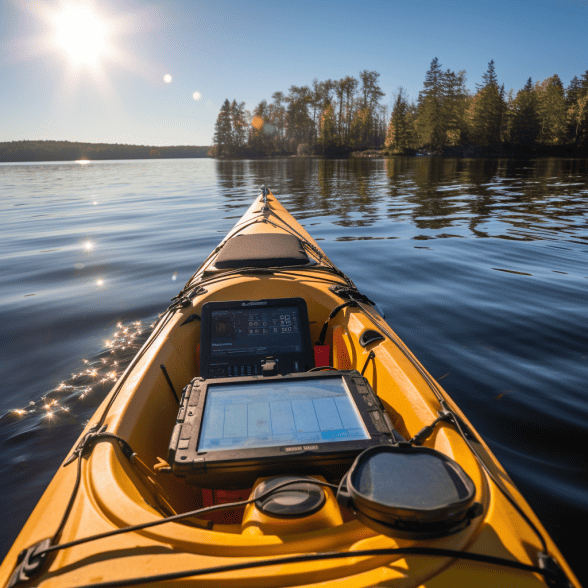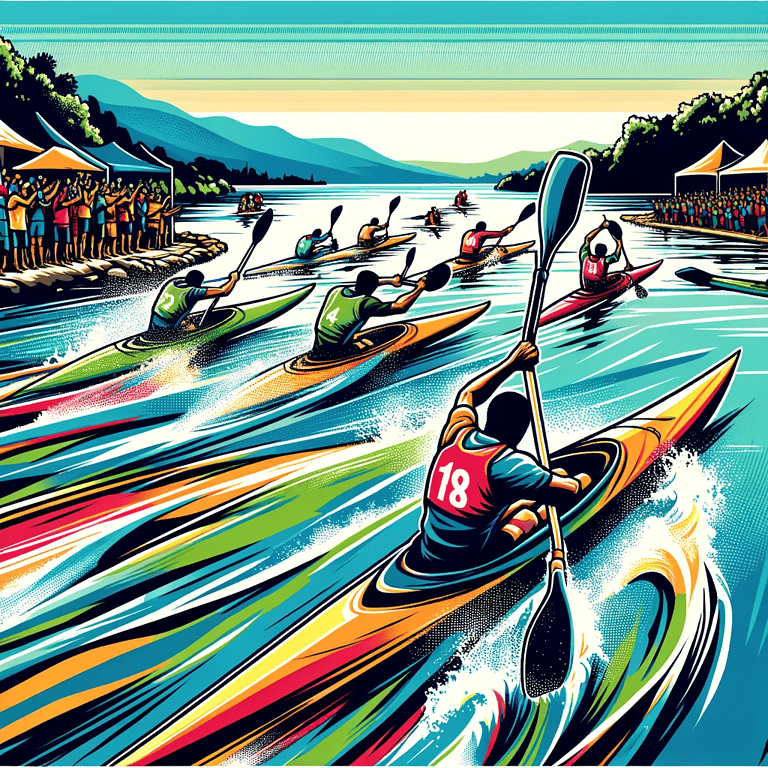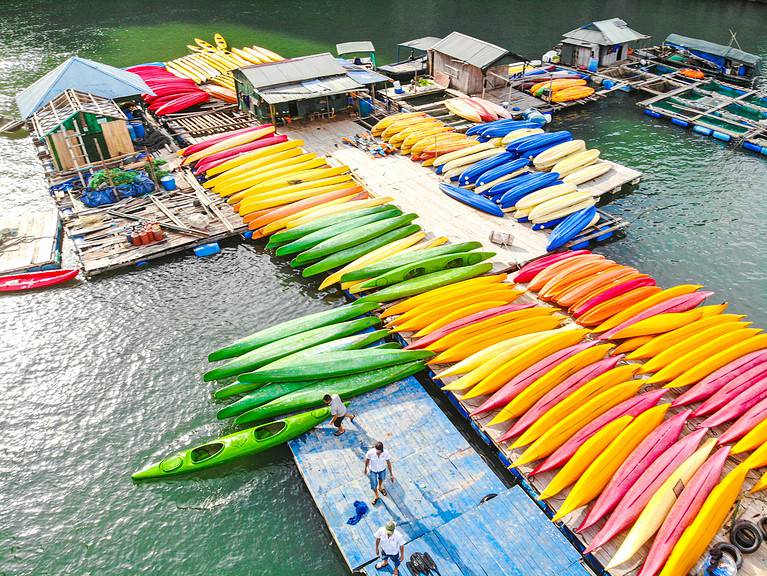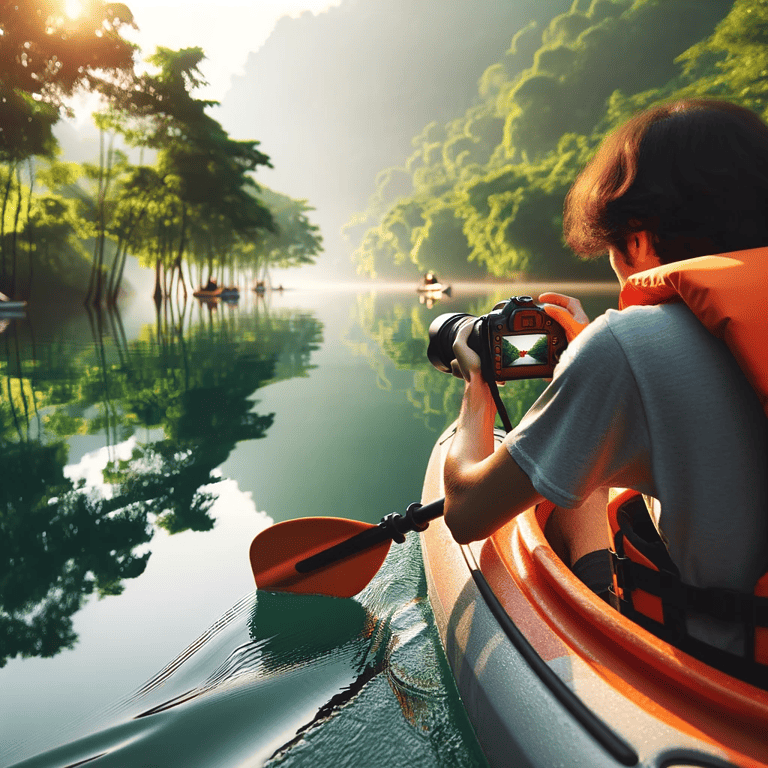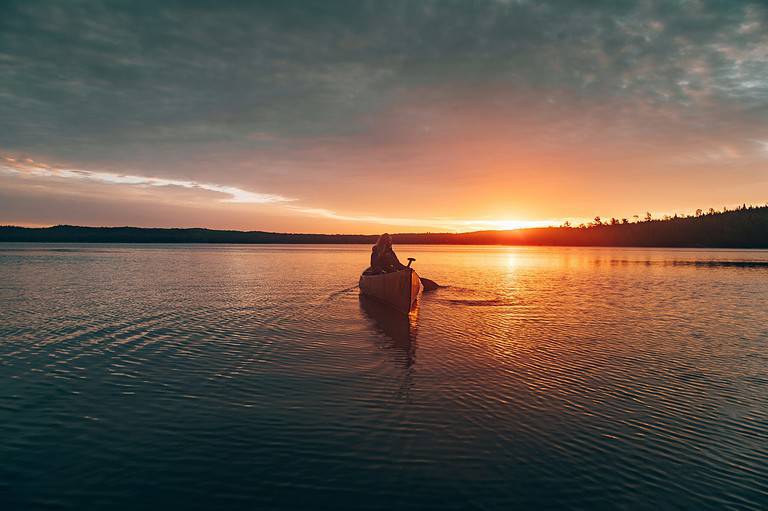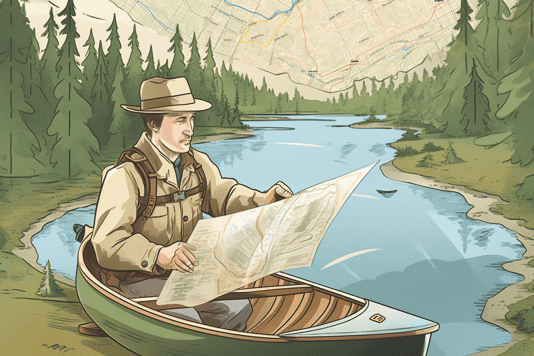The Best Introduction To Kayak Expeditions: Planning And Preparation
As the saying goes, “Adventure awaits those who seek it.” And what better way to embark on an exhilarating journey than through a kayak expedition? Introduction To Kayak Expeditions is an important step in preparing for your adventure. Whether you’re a seasoned paddler or a novice seeking new horizons, this article will guide you through the planning and preparation process for your upcoming adventure. It is always important that you participate in kayak lessons for beginners to ensure that you are prepared before you start.
Choosing the right kayak and gear is essential for a successful expedition. From selecting the appropriate paddle to ensuring your safety equipment meets all regulations, we’ll provide you with expert advice to make informed decisions.
Mapping out your route is another crucial step in preparing for your kayak expedition. We’ll delve into the intricacies of charting courses, understanding tides and currents, and identifying potential hazards.
Safety precautions and tips are paramount when venturing into unknown waters. Our comprehensive guide will cover everything from proper rescue techniques to weather forecasting, empowering you with the knowledge to stay safe throughout your journey.
Physical preparation and fitness play a significant role in ensuring an enjoyable experience. We’ll share exercises specifically tailored to strengthen key muscles used in kayaking, enabling you to tackle any challenge that comes your way.
Lastly, as responsible adventurers, environmental awareness and conservation must be at the forefront of our minds. We’ll discuss ways to minimize our impact on fragile ecosystems while fostering an appreciation for nature’s beauty.
Join us on this enlightening exploration of kayak expeditions – together, we can create memories that last a lifetime while cultivating a sense of belonging within our adventurous community.
Key Takeaways
- How do you plan a kayak expedition?
- Choosing the right kayak and gear is essential for a successful kayak expedition.
- Proper route planning is crucial, considering factors like tides, currents, weather, and hazards.
- Safety precautions should always be taken, such as wearing a PFD and bringing essential safety equipment.
- Environmental awareness and conservation practices should be prioritized during kayak expeditions.
Introduction To Kayak Expeditions: Choosing the Right Kayak and Gear
When choosing the right kayak and gear for your expedition, you must ensure you’re fully prepared for whatever challenges. Kayak equipment is essential for a successful journey, so investing in high-quality gear will withstand the elements and support your needs is crucial.
Select a kayak that suits your skill level, intended use, and body size. Various kayaks, such as recreational, touring, and sea kayaks, are available. Recreational kayaks are great for beginners or calm waters while touring kayaks offer more stability and storage space for longer trips. Sea kayaks are designed specifically for rough conditions and open-water exploration.
Once you’ve chosen your kayak, it’s time to consider the necessary gear. A well-fitted personal flotation device (PFD) is crucial for safety on the water. Look for one with adjustable straps and ample buoyancy. Additionally, invest in a paddle that matches your height and paddling style – lightweight materials like fiberglass or carbon fiber can significantly reduce fatigue during long expeditions.
Equipment maintenance is also an important aspect to consider before setting off on your kayak adventure. Regularly inspect your kayak for wear or damage – repair or replace parts as needed. Ensure all hatches and compartments are watertight before heading out to prevent accidents.
Mapping out your route is the next step in planning your kayak expedition. By carefully considering factors such as tides, currents, weather patterns, and points of interest, you can maximize safety while creating an enjoyable experience exploring new territories without getting lost on this exciting journey ahead!
Mapping Out Your Route
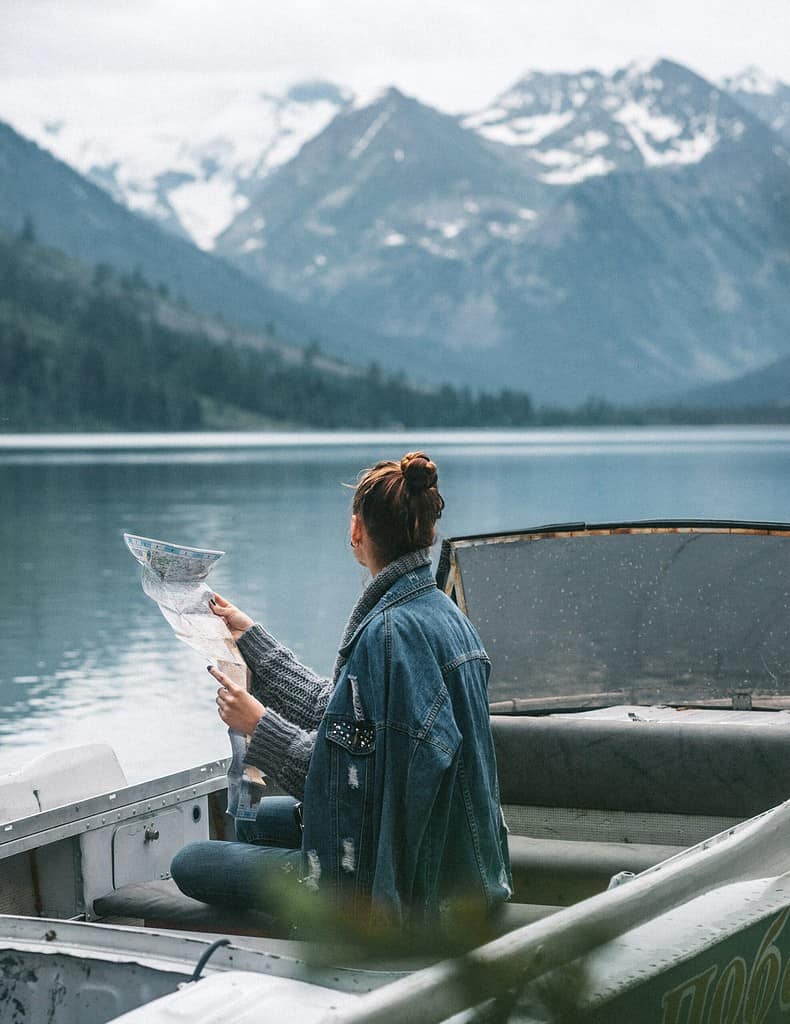
When mapping out our kayak expedition route, we start by researching potential locations that offer the adventure and scenery we desire. We make sure to understand the difficulty and length of different routes, considering factors such as currents, tides, and weather conditions. Additionally, planning for rest stops and camping sites is crucial for ensuring a safe and enjoyable journey.
Researching Potential Kayak Expedition Locations
Although researching potential kayak expedition locations may seem time-consuming, ensuring an unforgettable adventure is worth the effort. When exploring wildlife and nature, it is important to research the specific regulations of each location to ensure compliance with local rules and conservation efforts. This will protect the natural environment and give you a deeper understanding of the area you are visiting.
Look for information about protected areas, required permits, and any camping or fishing restrictions along your route. You can choose locations that offer diverse ecosystems and unique wildlife sightings by doing thorough research. Understanding the difficulty and length of different routes is essential for planning your kayak expedition effectively. It’s important to transition smoothly into this next section because it will further enhance our knowledge on planning a successful adventure without any hiccups.
Understanding the Difficulty and Length of Different Routes
To ensure a smooth and successful adventure, you must understand the difficulty and length of different routes before embarking on your kayak expedition. This will allow you to properly prepare and choose a route that matches your skill level and physical capabilities. When considering difficulty levels, it’s essential to consider factors such as water conditions, currents, wind patterns, and potential hazards.
Additionally, understanding the length of each route is essential for planning purposes, including determining how many days you will need to complete the expedition and ensuring you have enough supplies. Keep in mind that longer routes may require more endurance and stamina. By thoroughly researching the difficulty levels and lengths of various routes, you can make informed decisions that align with your abilities and goals.
Transition: Planning for rest stops and camping sites is another crucial aspect of preparing for a kayak expedition.
Planning for Rest Stops and Camping Sites
A critical aspect of preparing for a kayak adventure is arranging rest stops and camping sites. Planning these stops allows us to recharge and enjoy the journey even more. When selecting rest stops, it’s crucial to consider amenities that will provide comfort and relaxation. Look for places with clean bathrooms, picnic areas, and shower facilities. As for camping gear options, we must choose lightweight and compact items that won’t weigh us down during our expedition. Sleeping bags, tents, and cooking equipment should be durable yet easy to carry. To help you visualize the importance of planning rest stops and selecting camping gear wisely, here’s a table showcasing some key elements:
| Rest Stop Amenities | Camping Gear Options |
| Clean bathrooms | Lightweight sleeping bags |
| Picnic areas | Compact tents |
| Shower facilities | Portable cooking equipment |
As we move forward into the next section about safety precautions and tips, let’s ensure we are well-prepared in all aspects of our kayak expedition.
Safety Precautions and Tips
For a successful kayak expedition, you must prioritize safety and follow these essential tips. First and foremost, always wear a Personal Flotation Device (PFD) while kayaking. This is non-negotiable as it can save your life in an emergency. Additionally, bring a VHF radio to ensure proper communication with the outside world. In case of unforeseen circumstances or emergencies, being able to call for help is of utmost importance.
To further enhance your safety during the expedition, here are some additional tips to keep in mind:
- Stay aware of weather conditions: Keep an eye on the weather forecast before embarking on your kayak journey. Sudden weather changes can pose significant risks, so ensure you’re prepared for any storms or strong currents.
- Learn basic first aid skills: Accidents can happen even in well-planned trips. Knowing basic first aid techniques can be invaluable when dealing with minor injuries or medical emergencies while out on the water.
- Share your itinerary: Before setting off on your kayak expedition, inform someone reliable about your planned route and estimated return time. This way, if anything goes wrong or if you fail to check in as scheduled, they will know where to start looking for you.
- Pack essential safety equipment: Along with PFDs and a VHF radio, carry other necessary safety equipment such as flares, signaling devices, and a fully stocked first aid kit.
Following these safety precautions and tips’ll significantly reduce the risks associated with kayak expeditions and increase your chances of having a safe and enjoyable trip. Now let’s transition into discussing another crucial aspect – physical preparation and fitness – vital in ensuring a successful kayak expedition.
Physical Preparation and Fitness
Get yourself in peak physical condition and ready to conquer the waters with a fitness routine that will have you paddling effortlessly through the waves. Regarding kayak expeditions, physical preparation, and fitness are crucial for a successful and enjoyable experience. Not only will being physically fit enhance your overall performance, but it will also help prevent injuries and fatigue during long hours on the water.
Incorporate strength and endurance training into your fitness routine to ensure you are adequately prepared. Strength training exercises such as squats, lunges, and core workouts will help build the muscle groups used in kayaking. Additionally, upper body exercises like push-ups and pull-ups will strengthen your arms, shoulders, and back muscles essential for powerful paddling.
Regarding endurance training, running, swimming, or cycling can be highly beneficial. These cardiovascular exercises improve stamina and increase lung capacity, allowing you to paddle for extended periods without feeling exhausted. It is recommended to gradually increase the duration and intensity of these workouts over time to build up your endurance levels effectively.
To further assist you in planning your fitness routine effectively, we have provided a table below outlining some sample exercises for both strength training and endurance training:
| Strength Training | Endurance Training |
| Squats | Running |
| Lunges | Swimming |
| Core Workouts | Cycling |
| Push-Ups |
By following a well-rounded fitness routine that includes both strength training and endurance training activities mentioned above, you’ll be better equipped physically to take on the challenges of kayak expeditions. In our next section about environmental awareness and conservation, we’ll discuss how to protect the natural beauty of our waterways while enjoying them fully.
Environmental Awareness and Conservation
Take a moment to appreciate the breathtaking beauty of our waterways and discover how you can play an active role in preserving them for future generations. As kayakers, we have a unique opportunity to explore these natural wonders up close and personal. However, it is essential that we also become aware of the environmental challenges they face and take steps to protect them. Here are some key points to consider:
- Awareness campaigns: Participating in awareness campaigns is a great way to educate ourselves and others about the importance of conservation. By spreading the word through social media, organizing local events, or joining existing initiatives, we can raise awareness about the fragility of our waterways and inspire others to take action.
- Sustainable practices: Adopting sustainable practices that minimize our environmental impact is crucial when embarking on a kayak expedition. This includes practicing Leave No Trace principles by packing out all waste and disposing of it properly. Additionally, using eco-friendly products such as biodegradable soaps and sunscreen helps preserve the delicate ecosystems we encounter along our journey.
- Supporting local conservation efforts: Many organizations work tirelessly to protect our waterways through restoration projects, habitat preservation, and advocacy for stronger environmental policies. By donating time or resources to these initiatives, we contribute directly to their success and ensure that future generations can enjoy these pristine environments.
- Building partnerships with like-minded individuals: Joining forces with fellow kayakers who share our passion for environmental conservation allows us to amplify our impact. We can organize clean-up days along riverbanks or collaborate on educational workshops to promote sustainable practices among outdoor enthusiasts.
We become stewards of our waterways by actively engaging in awareness campaigns and adopting sustainable practices during kayak expeditions. Let’s remember that preserving their beauty is vital for us and future generations who deserve the chance to experience their awe-inspiring wonders firsthand.
Frequently Asked Questions
What are some common challenges and obstacles that kayakers may encounter during expeditions?
During kayak expeditions, we may face various challenges that require careful planning and safety precautions. Some common challenges kayakers face include unpredictable weather conditions, strong currents, rough waters, and navigation difficulties. It is crucial to take necessary safety measures such as wearing appropriate gear, carrying communication devices, and being aware of potential hazards. By preparing ourselves adequately and taking the necessary precautions, we can enjoy a safe and fulfilling kayak expedition experience.
How can I determine the appropriate duration for a kayak expedition?
Determining the appropriate duration for a kayak expedition can be as challenging as finding a needle in a haystack. Factors to consider include weather conditions, distance, skill level, and available resources. But fear not! By carefully considering these factors and consulting experienced kayakers or guidebooks, you can make an informed decision that ensures a successful and enjoyable expedition. Remember, it’s all about finding that perfect balance between adventure and safety for our kayaking community to thrive.
Are any special permits or licenses required for kayak expeditions in certain areas?
Special permits and licensing requirements may vary depending on the location of your kayak expedition. Researching and complying with regulations set by local authorities or governing bodies is crucial. Some areas may require entry, fishing, or camping permits, while others may have specific licensing requirements for kayaking in certain waters. Ensure you obtain all necessary permits and licenses for a smooth and legal journey during your kayak expedition.
What are some essential items to pack for a multi-day kayak expedition?
When going on multi-day kayak expeditions, it’s crucial to pack essential items. These include a tent, sleeping bags, cooking equipment, and food supplies. Preparing for challenges and obstacles during the expedition, such as strong currents or adverse weather conditions, is essential. The appropriate duration for a kayak expedition depends on factors like distance and difficulty level. Additionally, obtaining any required permits or licenses and practicing proper waste disposal to minimize environmental impact is necessary.
How can I ensure proper waste disposal and minimize my environmental impact during a kayak expedition?
Proper waste disposal and reducing our environmental impact on a kayak expedition is crucial. We can start by packing biodegradable soap and avoiding harmful chemicals. It’s important to bring reusable containers for food and water to minimize single-use plastics. Additionally, we should always carry a small trash bag to collect any waste we generate along the way. By being mindful of our actions, we can protect the environment and ensure a clean and sustainable kayak expedition experience.
Conclusion
In conclusion, embarking on a kayak expedition requires careful planning and preparation. You can ensure a successful adventure by choosing the right kayak and gear, mapping out your route, taking safety precautions, and being physically prepared. Additionally, it is essential to have environmental awareness and conservation practices in mind to protect the beautiful landscapes you will encounter. Remember, “the world is your oyster,” so get out there and explore the wonders of nature through thrilling kayak expeditions! Happy paddling!

